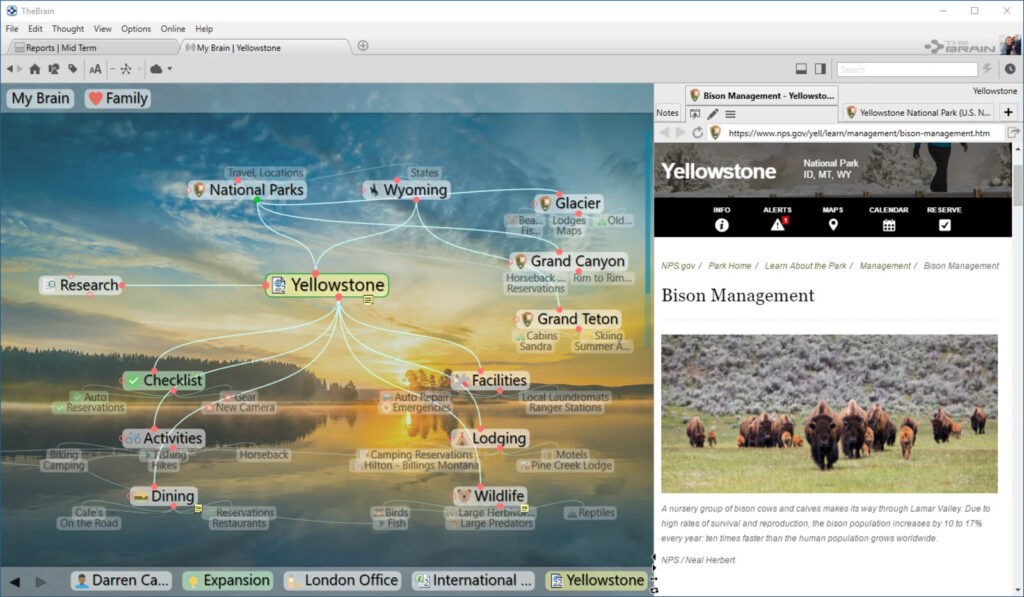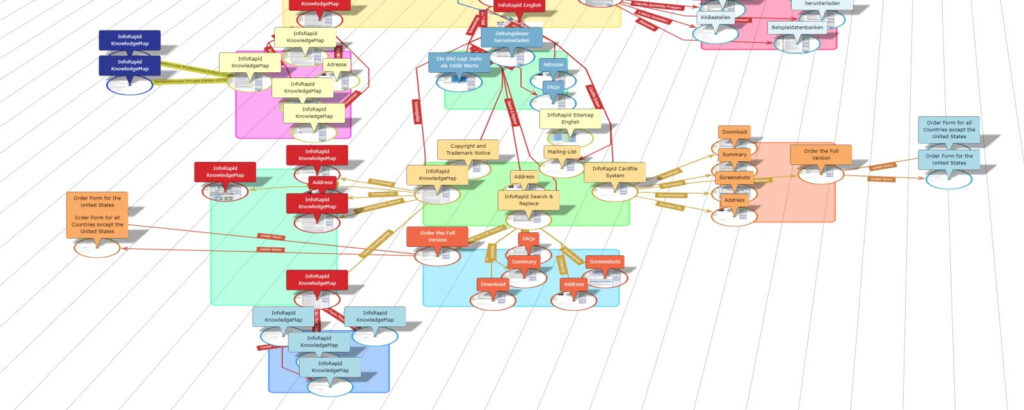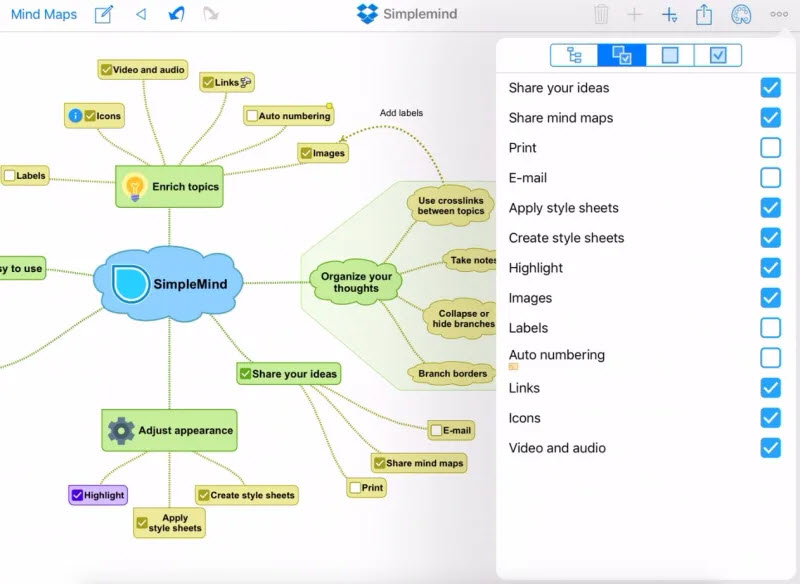The Best Mind-Mapping Apps of 2019
The Best Mind-Mapping Apps of 2019

Let’s get the hard question out of the way, first: What the heck is a mind map? Think of it like a way to organize your thoughts. You pick a general topic, then you draw out branches to subtopics, and each of these subtopics can have branches of their own that go to sub-subtopics, and so on and so forth.
While you’re
welcome to doodle a mind map by hand on some paper, there are also
plenty of apps you can use to make the process simpler and more
organized. We asked for your favorites some time ago, and here’s what
you told us you loved:
MindManager

Though extremely expensive ($349!), this “virtual whiteboard” of an app allows you to draw connections between related topics and drag them around to create a lovely looking map of your thoughts. Using MindManager, it’s easy to add extra detail to anything on your mind map without causing unnecessary chaos, and duplicating ideas between sections is similarly simple. You can also transform your mind mapping into a Gantt chart, in case you’re planning to use MindManager more as a project-management tool than a simple way to organize your thoughts on a topic. (Given its price, I suspect that’s what most people use this app to do.)
As Lifehacker reader saymwah described:
“The killer MM features for me are (1) filtering and (2) views. I tend to make very large mind maps and these features help me get a handle on what’s important right now.
I wish there were a cheaper alternative that didn’t have all the business/collaborative features.”
TheBrain

This mind-mapping app comes with free and pro versions, and you get a 30-day free trial to test out all its features (to help you decide if you want to pay $219 for the “pro” license). Like other apps, you can use TheBrain to create fairly complicated mind maps, and attach various files, documents, and other notes to any tasks or ideas you create in your mental web. TheBrain is available on Windows, Mac, the web, and both Android and iOS—and your changes should synchronize across all instances, so you can easily access the most updated version of your mind map when on the go.
According to Lifehacker reader Ragehard:
“I love TheBrain and believe it is the best tool for visually organizing thoughts. Its two greatest strengths are 1) the ability to link to multiple parent and sibling nodes and 2) when you select/focus on a new node, the software moves the connecting nodes around to parent/subordinate positions automatically. I find that mindmaps with only one parent/child relationship to be too limiting, and other programs that allow for multiple node connections are time consuming to edit. Its biggest drawback is the absence of a browser extension that allows for quick additions to your brain (e.g. Evernote). If someone could combine TheBrain and Evernote I would use that exclusively. As for price, it is expensive, but TheBrain is so useful that I begrudgingly pay for it.”
KnowledgeBase Builder

Even though its website isn’t the prettiest, KnowledgeBase Builderdoes allow you to build mind maps on Windows, Mac, iOS, Android, or even online. While the downloadable apps will cost you around $10 or so, the online tool appears to be free—so it’s worth spending a few minutes playing with it, at the very least, to see if you like it. I found it was fairly easy to master the basics, and creating a pretty complicated mind map didn’t take very long at all. While its UI isn’t the prettiest, you can’t complain given its price (for the web-based version, that is).
As Lifehacker reader isquish writes:
As a winner-up, I love KnowledgeBase Builder for its ability to make beautiful, customizable mindmaps suitable for consumption by non-mindmap users. The maker’s website doesn’t do the product any favors; the best features are hidden in blog updates, such as being able to set per-node display images (optionally bound within a custom shape), built-in diagram display/node grouping mechanisms, etc. The software interface is not as polished as some other mind mapping products, though, and requires work to get good looking results.
SimpleMind

Unlike a number of the other apps we’ve profiled, SimpleMind is a reasonably priced mind-mapping app that’ll set you back around $25 for desktop versions and less than $10 for mobile versions. It comes with both a free trial and a free version (with limited functionality), and it allows you to add all sorts of images, video recordings, and even voice memos to the complicated mind maps you create.
As Lifehacker reader John (simply) describes:
“I love SimpleMind, and have actually paid for it :-)“
FreeMind

As the name implies, FreeMind is an open-source mind-mapping tool that costs you absolutely nothing to use. What it lacks in graphics and grace, it makes up for in cost and functionality. If you’re just getting started in the wide world of mind mapping—or want a different method for keeping track of your projects—I recommend giving FreeMind a shot. And since FreeMind stores all of the maps you create in XML, you should be able to convert them to another mind-mapping app, should you decide to jump ship.
According to Lifehacker reader Not_a_robot_beepboop:
“Freemind is great — a real (and surprising) workhorse for developing ideas, outlining, zero-drafting, and exporting ODT for LibreOffice writer editing ( Writer lacks Word’s outline view). I used it for academic articles and other brief pieces of writing.* It supplements initial manual mindmapping very well. Unfortunately, the project seems to be discontinued and it is hard to use in Linux. To that end, Freeplane seems to be a good replacement, although I haven’t tried all the bells and whistles.”